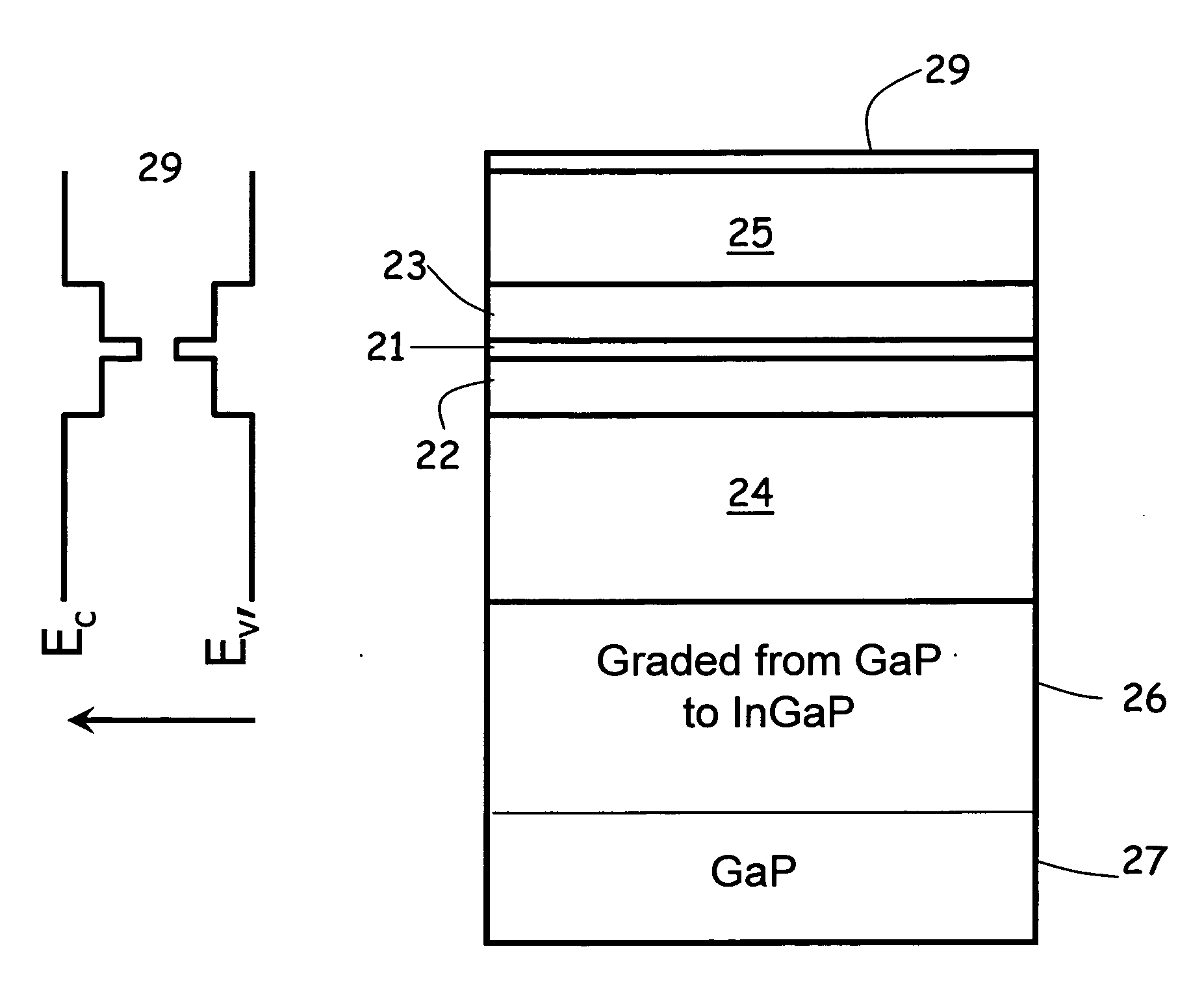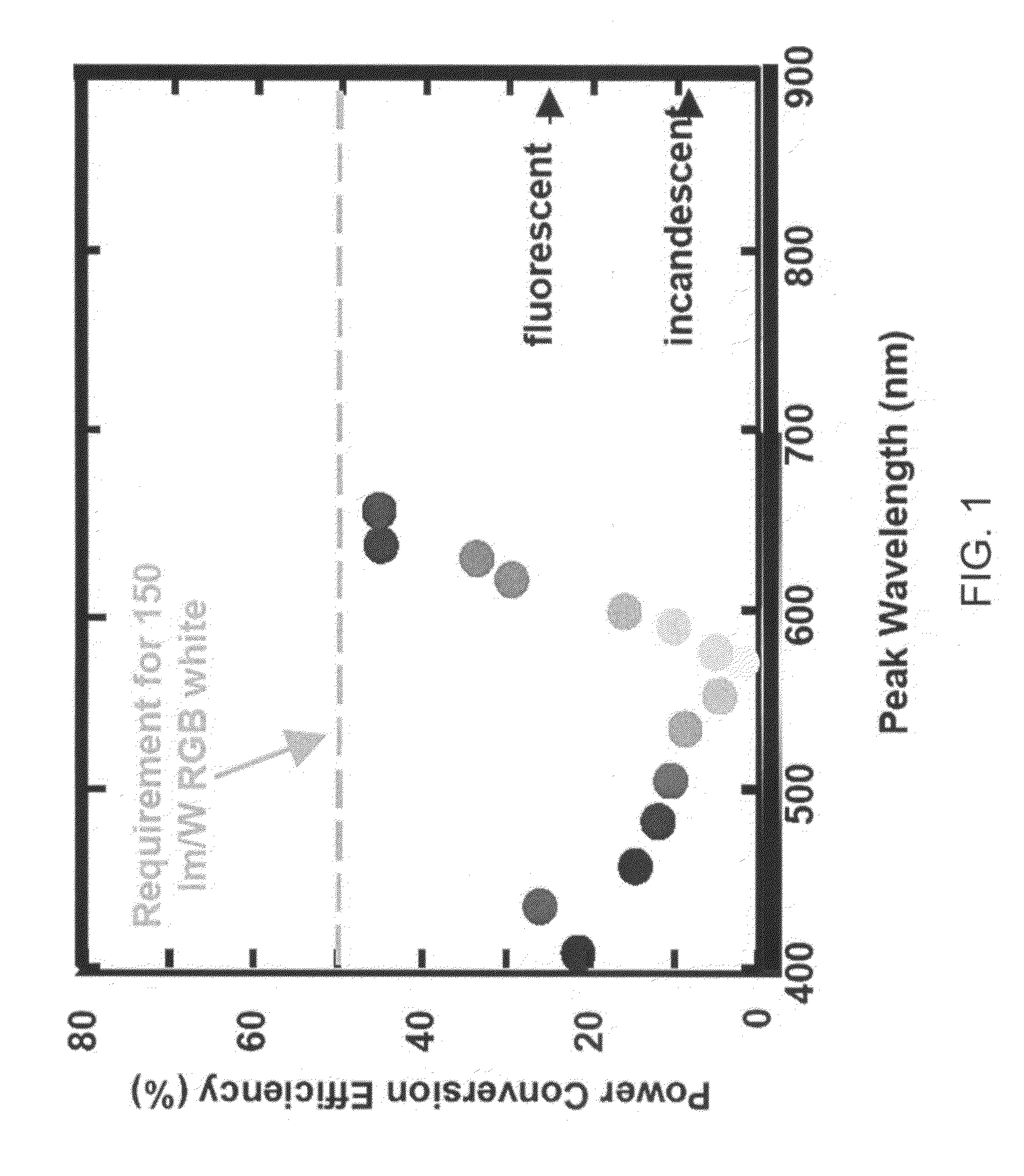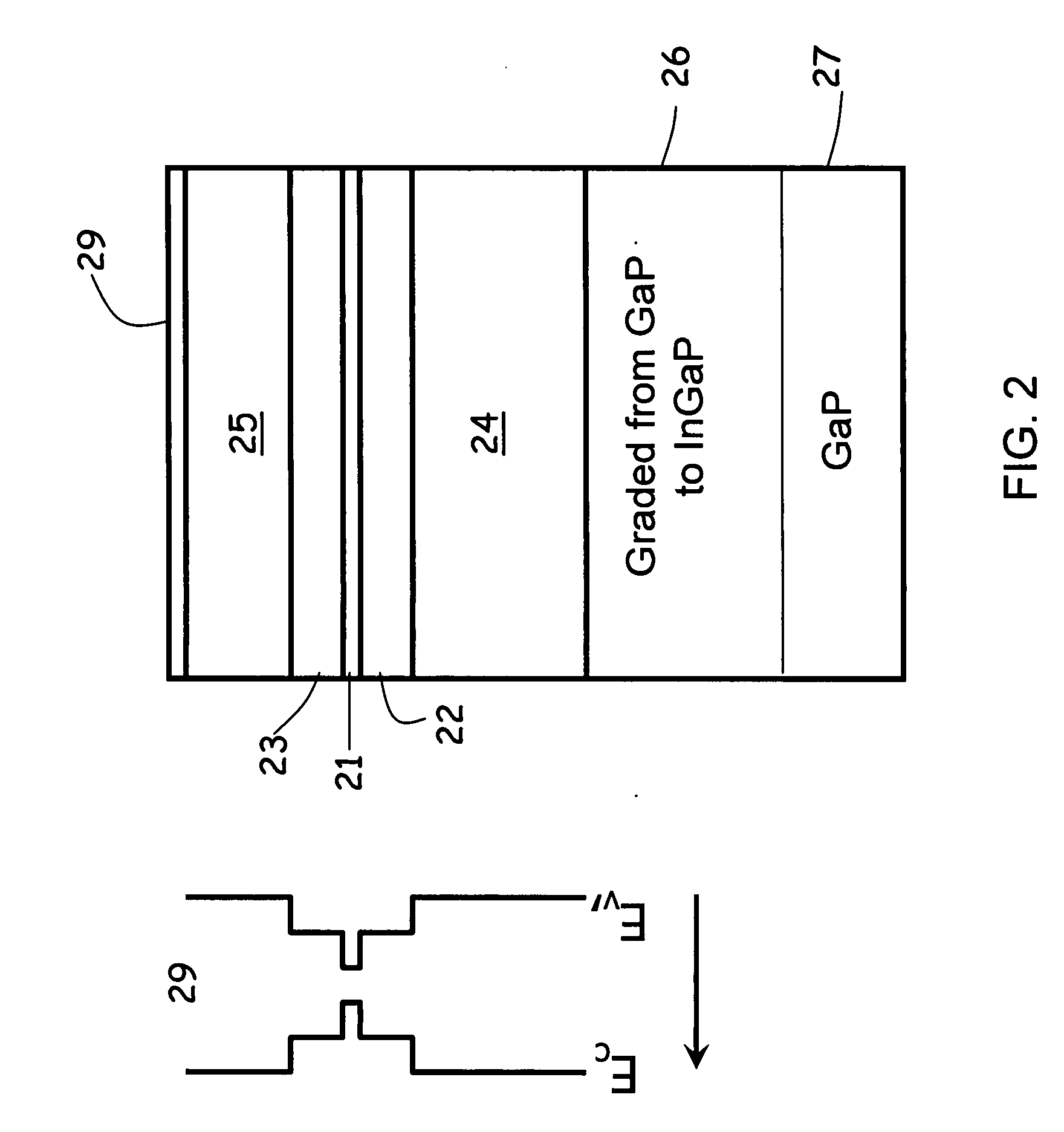Semiconductor light-emitting structure and graded-composition substrate providing yellow-green light emission
a technology of semiconductors and light-emitting structures, applied in the direction of semiconductor devices, basic electric elements, electrical equipment, etc., can solve the problems of low green emission of light-emitting devices including aluminum in their active region, light-emitting devices such as leds on small lattice constant substrates, and (al)ingan-based light-emitting devices (leds) on gaas substrates
- Summary
- Abstract
- Description
- Claims
- Application Information
AI Technical Summary
Problems solved by technology
Method used
Image
Examples
Embodiment Construction
[0025]Applicants have appreciated that by relaxing the constraint that the light-emitting semiconductor material (e.g., AlInGaP or InGaP) be lattice-matched to GaAs, it is possible to use compositions of these semiconductor materials with a larger band gap in the yellow-green portion of the visible electromagnetic spectrum. In inorganic materials systems, Applicants believe the inability to achieve efficient yellow-green emission may be a result of a lattice-mismatch problem, as the lattice constant of AlInGaP and InGaP desirable for yellow-green light emission is different from that of common substrate materials, such as GaAs. By using compositions of AlInGaP or InGaP that are not lattice-matched to GaAs, high-efficiency yellow-green emission can be achieved by choosing compositions of these materials that provide more desirable electrical and optical confinement. One difficulty with this approach, however, has been the prevalence of crystal defects resulting from the growth of a l...
PUM
 Login to View More
Login to View More Abstract
Description
Claims
Application Information
 Login to View More
Login to View More - R&D
- Intellectual Property
- Life Sciences
- Materials
- Tech Scout
- Unparalleled Data Quality
- Higher Quality Content
- 60% Fewer Hallucinations
Browse by: Latest US Patents, China's latest patents, Technical Efficacy Thesaurus, Application Domain, Technology Topic, Popular Technical Reports.
© 2025 PatSnap. All rights reserved.Legal|Privacy policy|Modern Slavery Act Transparency Statement|Sitemap|About US| Contact US: help@patsnap.com



